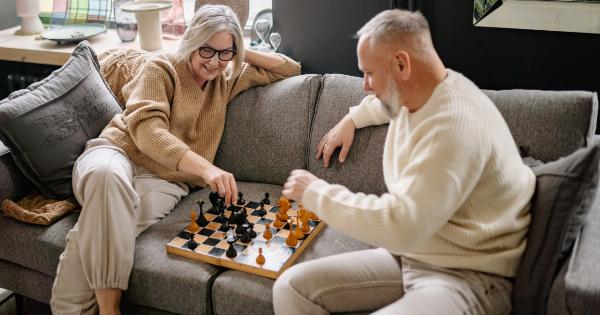Dogs are often considered to be man’s best friend. They are loyal, affectionate, and can bring immense joy and happiness to people’s lives.
In addition to being great companions, dogs can also play a significant role in children’s development, particularly their socialization skills. Interacting with a dog can teach children valuable lessons about communication, empathy, and responsibility. This article explores how dogs can assist in children’s socialization skills and the numerous benefits that arise from such interactions.
The Importance of Socialization Skills for Children
Socialization skills are essential for children’s overall development and well-being. These skills help children interact effectively with others, develop friendships, and navigate various social situations.
Strong socialization skills also contribute to better mental health and self-esteem. However, some children may struggle with social interactions due to shyness, anxiety, or other factors. This is where dogs can play a pivotal role in enhancing children’s socialization skills.
Building Communication Skills
Interacting and communicating with a dog provides children with a unique opportunity to develop their communication skills.
Dogs are highly responsive to non-verbal cues and body language, teaching children the importance of clear and consistent communication. Through commands, gestures, and praise, children learn how to express their needs and desires effectively. This can then translate into improved communication with their peers and adults.
Fostering Empathy and Compassion
Dogs are known for their ability to evoke empathy and compassion in people. When children care for a dog, they learn to understand and respond to the dog’s needs, emotions, and well-being.
This nurtures their innate capacity for empathy and compassion, enabling them to relate to others’ feelings and experiences. For children who may struggle with empathy, the unconditional love and acceptance of a dog can be transformative.
Promoting Responsibility
Taking care of a dog requires responsibility and commitment. Children who grow up with dogs learn to feed, groom, exercise, and attend to a dog’s needs. This responsibility fosters a sense of accountability and nurtures their self-confidence.
As children take ownership of their role in caring for a dog, they develop a deeper understanding of the importance of responsibility in all aspects of life.
Reducing Anxiety and Stress
Dogs are often referred to as therapy animals due to their calming and comforting presence. Interacting with dogs has been shown to reduce anxiety, stress, and even lower blood pressure.
For children who struggle with social anxiety or find social interactions overwhelming, spending time with a dog can provide a safe and non-judgmental space. This can help them relax, build confidence, and approach social situations with greater ease.
Encouraging Physical Activity
Keeping up with a dog’s energy levels requires regular physical activity. Whether it’s playing fetch in the backyard or going for walks, children who have a dog naturally engage in physical exercise.
This regular physical activity not only benefits their overall health but also provides opportunities for social interactions. Walking a dog in the neighborhood often leads to encounters with other dog owners and their children, fostering social connections.
Developing Social Bonds
Dogs have a remarkable ability to bring people together. Whether it’s at a dog park, training classes, or simply walking down the street, dogs serve as social catalysts, facilitating interactions between individuals.
For children, having a dog can enhance their social life by providing shared experiences and common interests. They may find it easier to initiate conversations and make friends when they have a dog by their side.
Teaching Boundaries and Respect
Interacting with a dog requires children to understand and respect boundaries. They learn that certain actions may cause discomfort or stress to the dog and adjust their behavior accordingly.
This understanding of boundaries transfers to their interactions with humans, as they learn to consider others’ feelings and personal space. By respecting the dog’s boundaries, children develop a foundation for healthy relationships in all areas of their lives.
Building Confidence and Self-Esteem
The unwavering love and acceptance of a dog can have a profound impact on a child’s self-esteem. Dogs provide constant companionship, support, and praise, creating an environment where children feel valued and worthy.
This boosts their confidence and self-esteem, enabling them to approach social situations with a positive mindset. In turn, increased self-confidence enhances their ability to interact and form meaningful connections with others.
Enhancing Emotional Intelligence
Emotional intelligence refers to one’s ability to recognize, understand, and manage emotions, both in oneself and others. Interacting with a dog helps children develop and practice emotional intelligence skills.
Dogs can sense and respond to various emotions, which provides children with immediate feedback on their own emotional expressions. This feedback loop helps children learn how to regulate their emotions, interpret facial expressions and body language, and respond empathetically to others.
Cultivating Positive Social Skills
Regular interaction with a dog helps cultivate positive social skills in children. They learn essential qualities such as patience, kindness, and cooperation.
For example, waiting for a dog to fetch a ball teaches patience, while teaching a dog a new trick requires persistence and cooperation. These skills then extend to their interactions with peers, teachers, and family members, leading to more harmonious relationships and improved social dynamics.
Conclusion
Integrating a dog into a child’s life can have significant benefits for their socialization skills and overall well-being.
Dogs provide a unique and invaluable opportunity for children to develop communication skills, empathy, responsibility, and various other social qualities. By nurturing these skills through interactions with a dog, children can enhance their social connections, self-confidence, and emotional intelligence. The presence of a furry friend can truly make a difference in a child’s social development.































